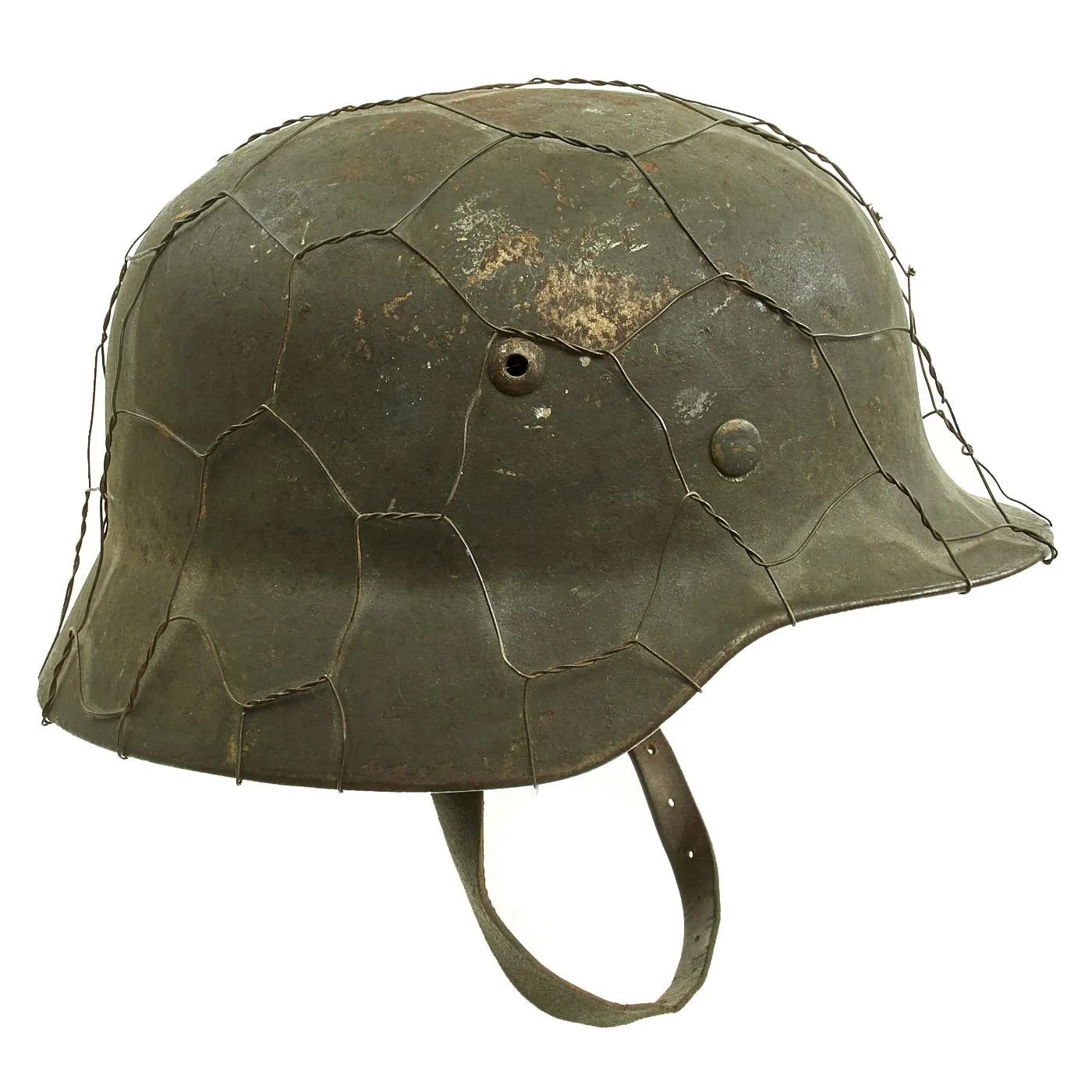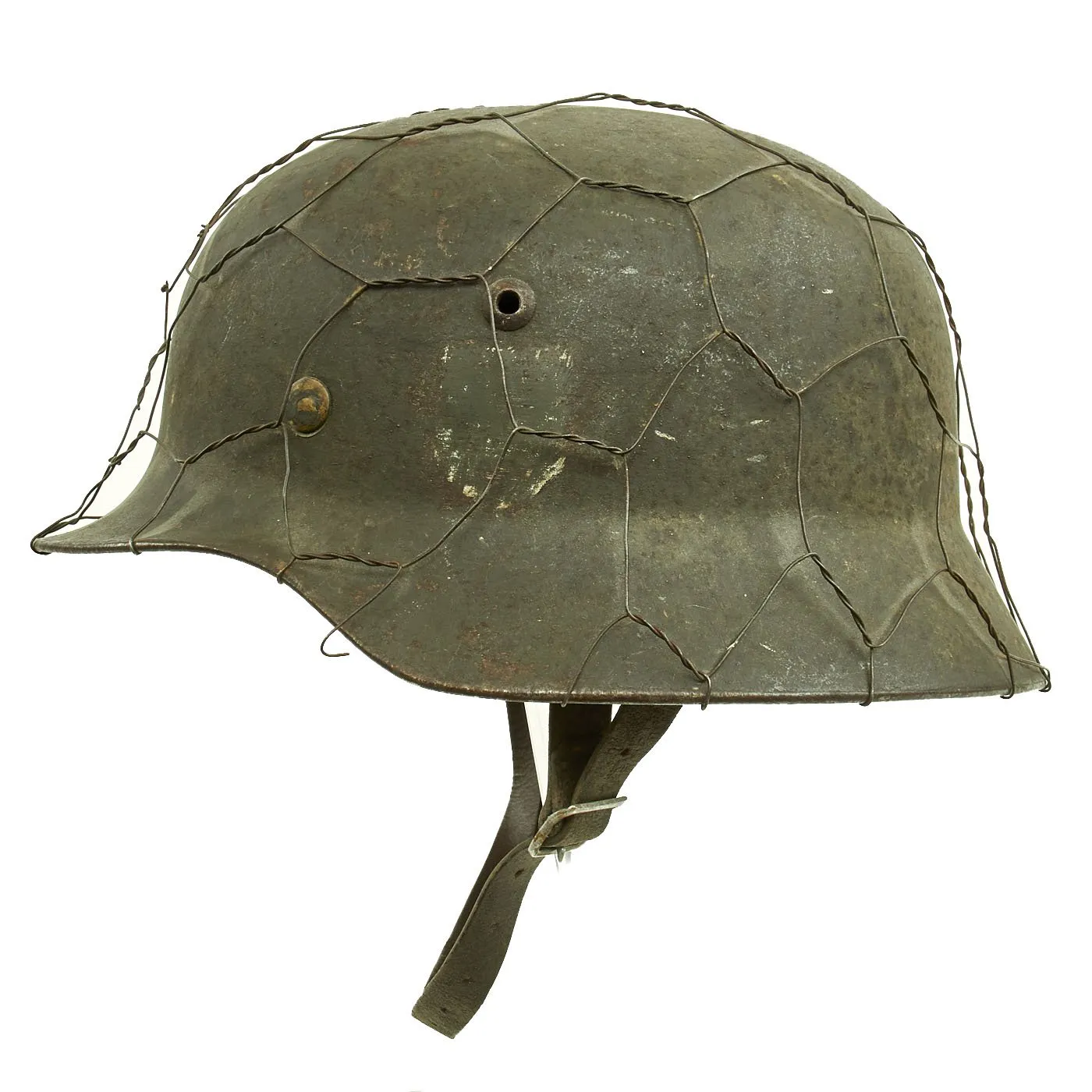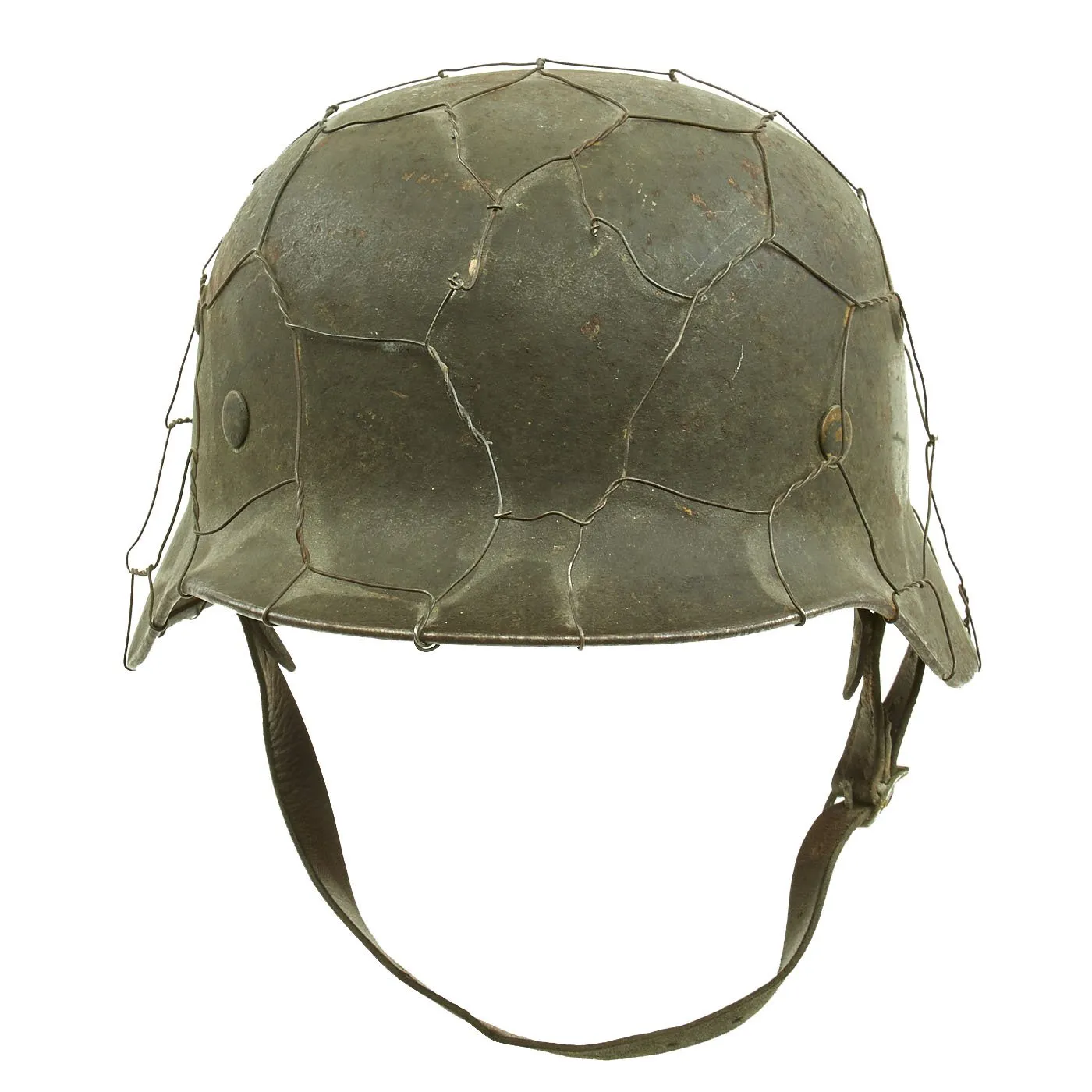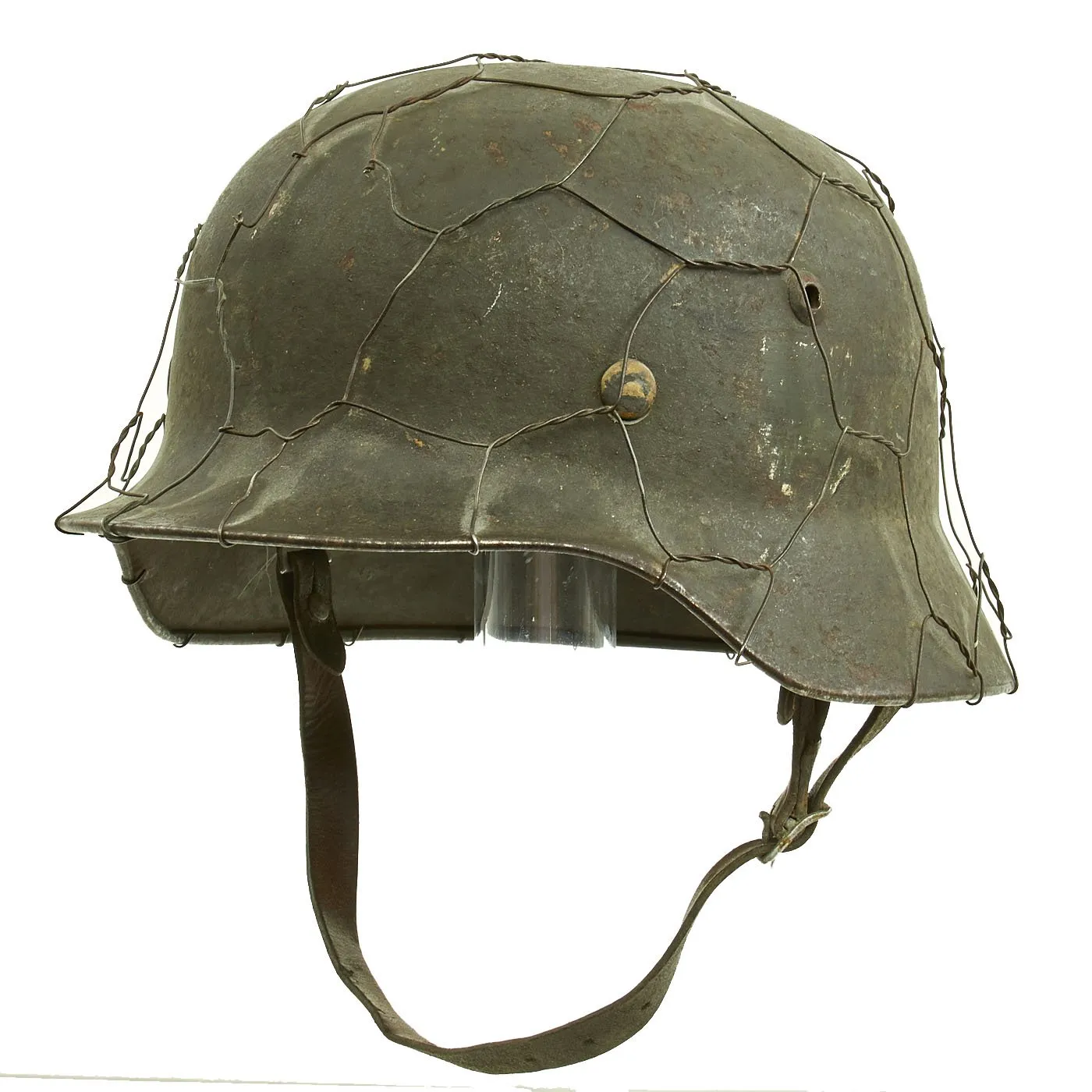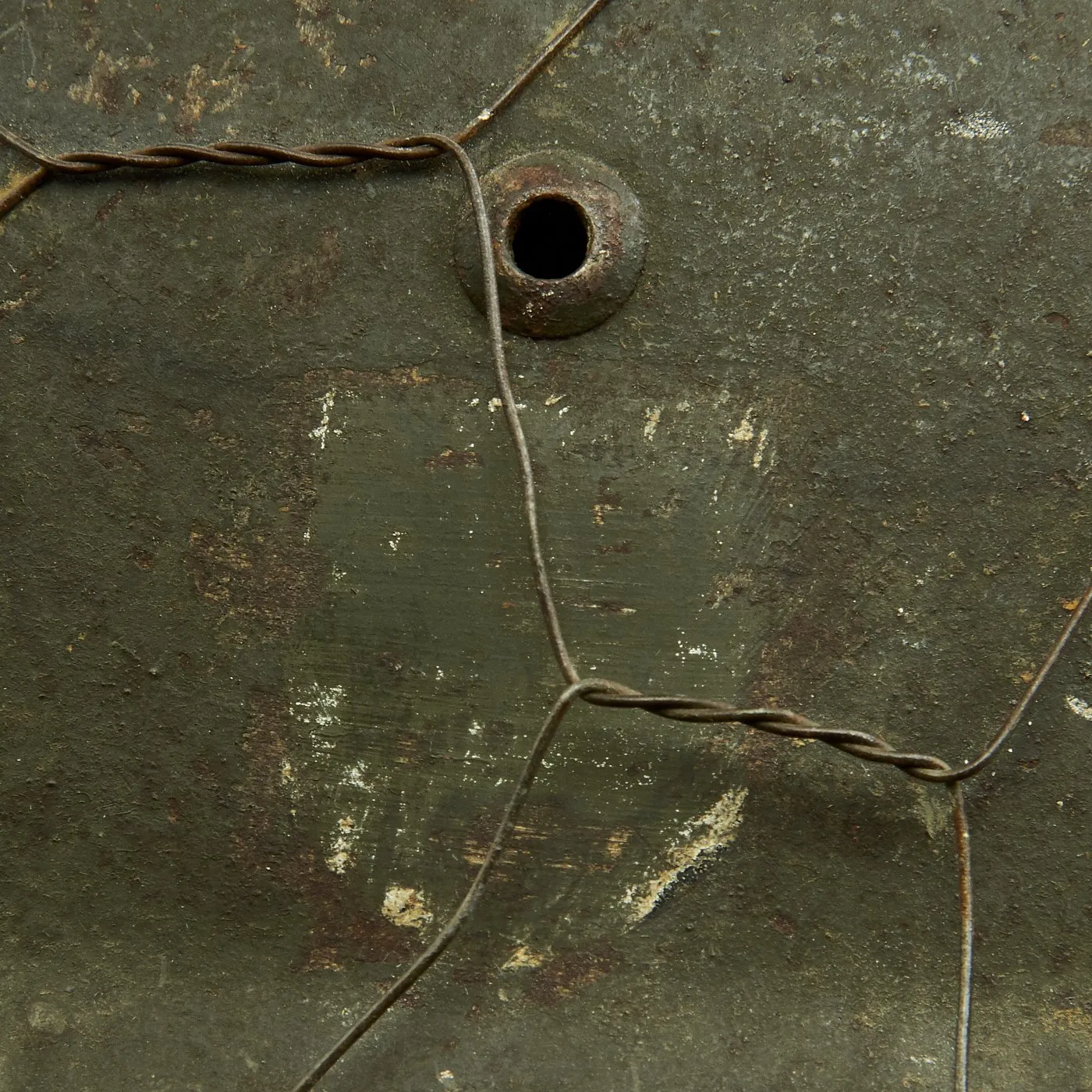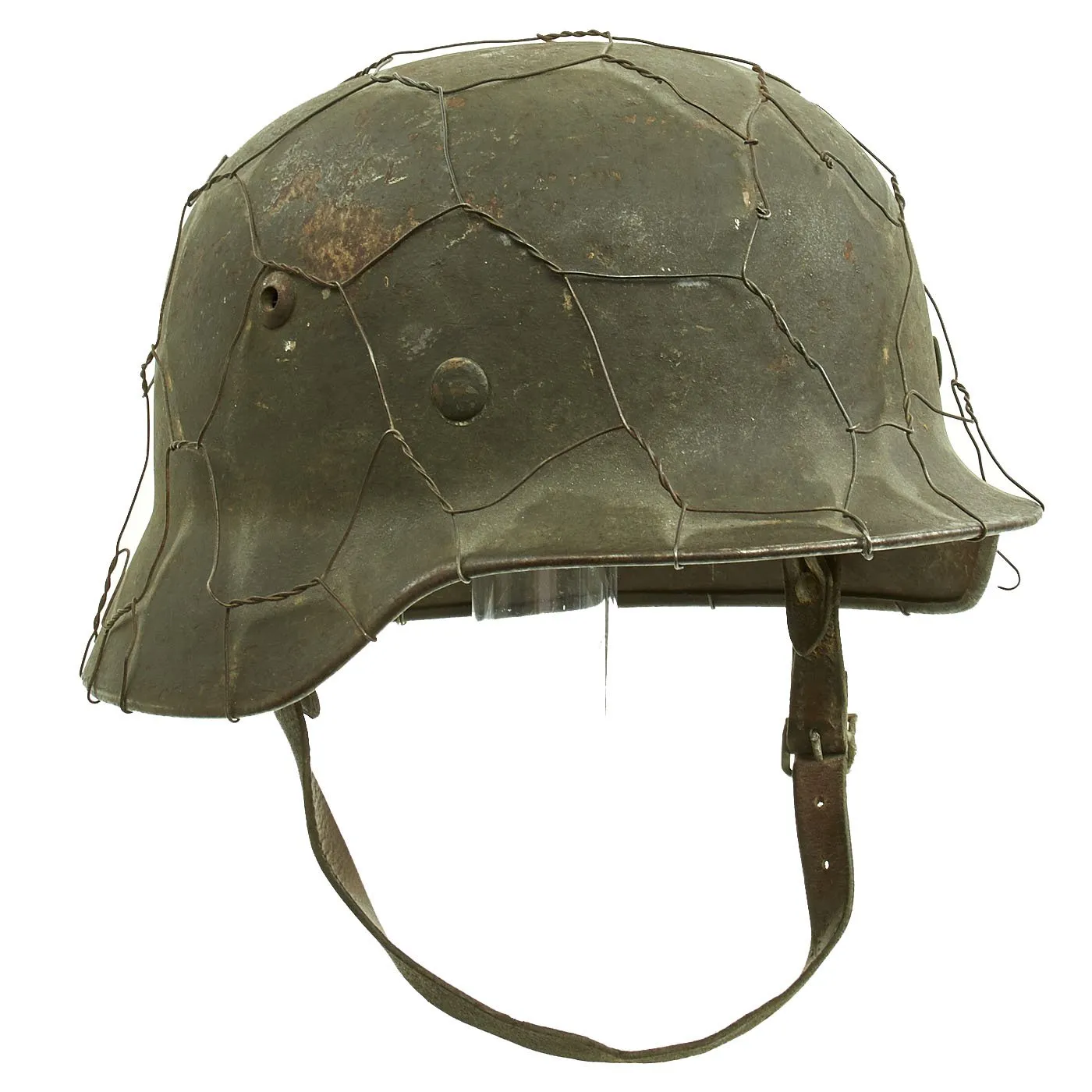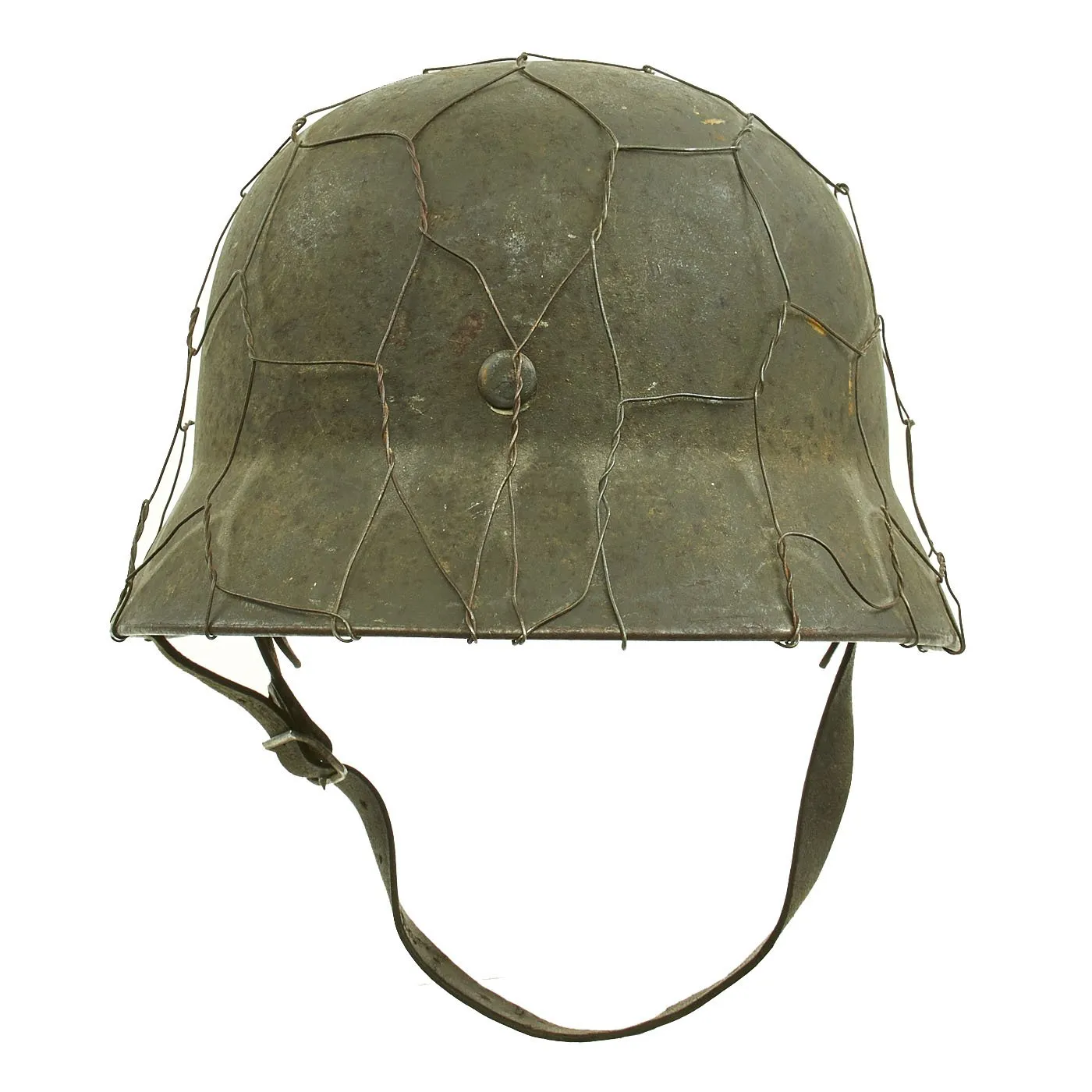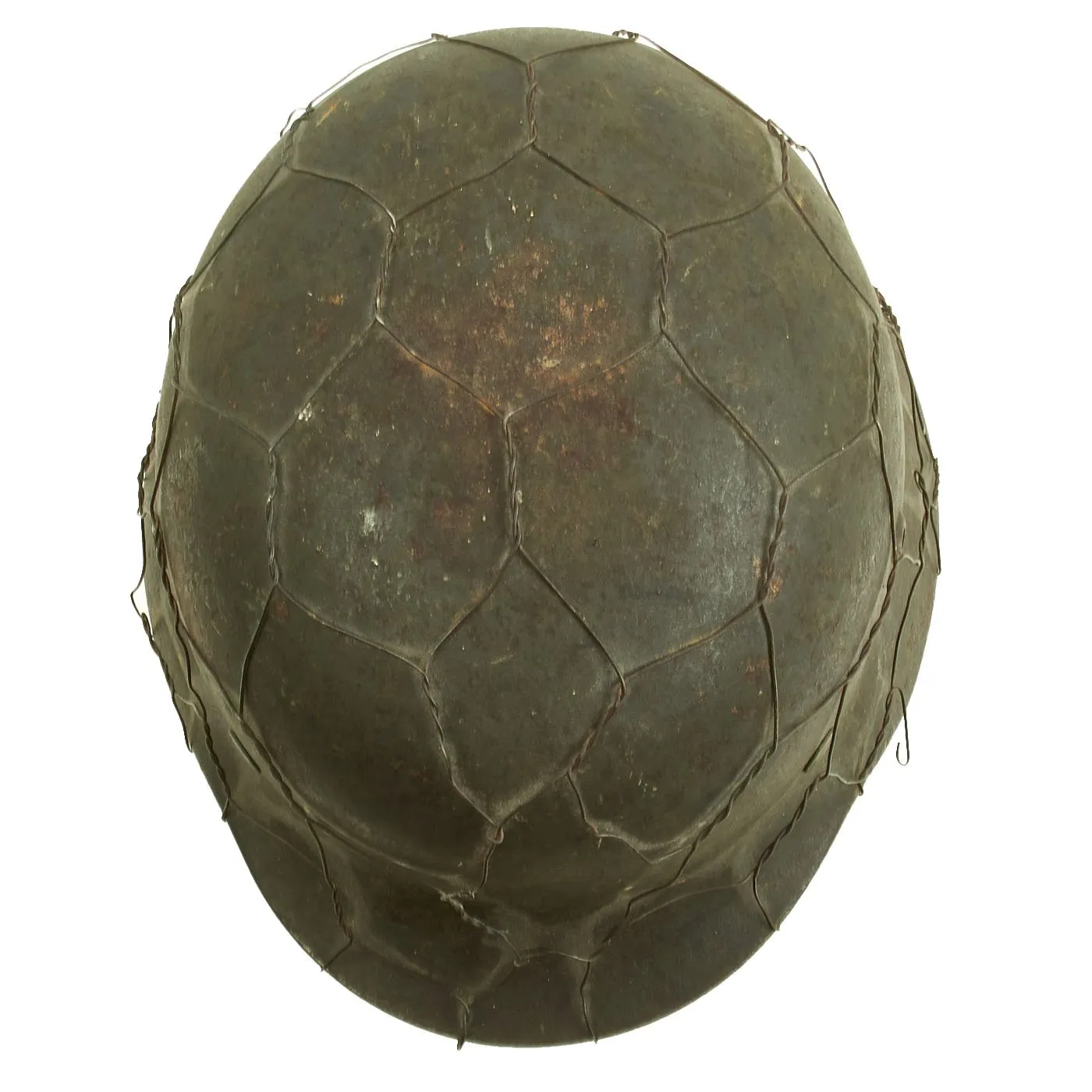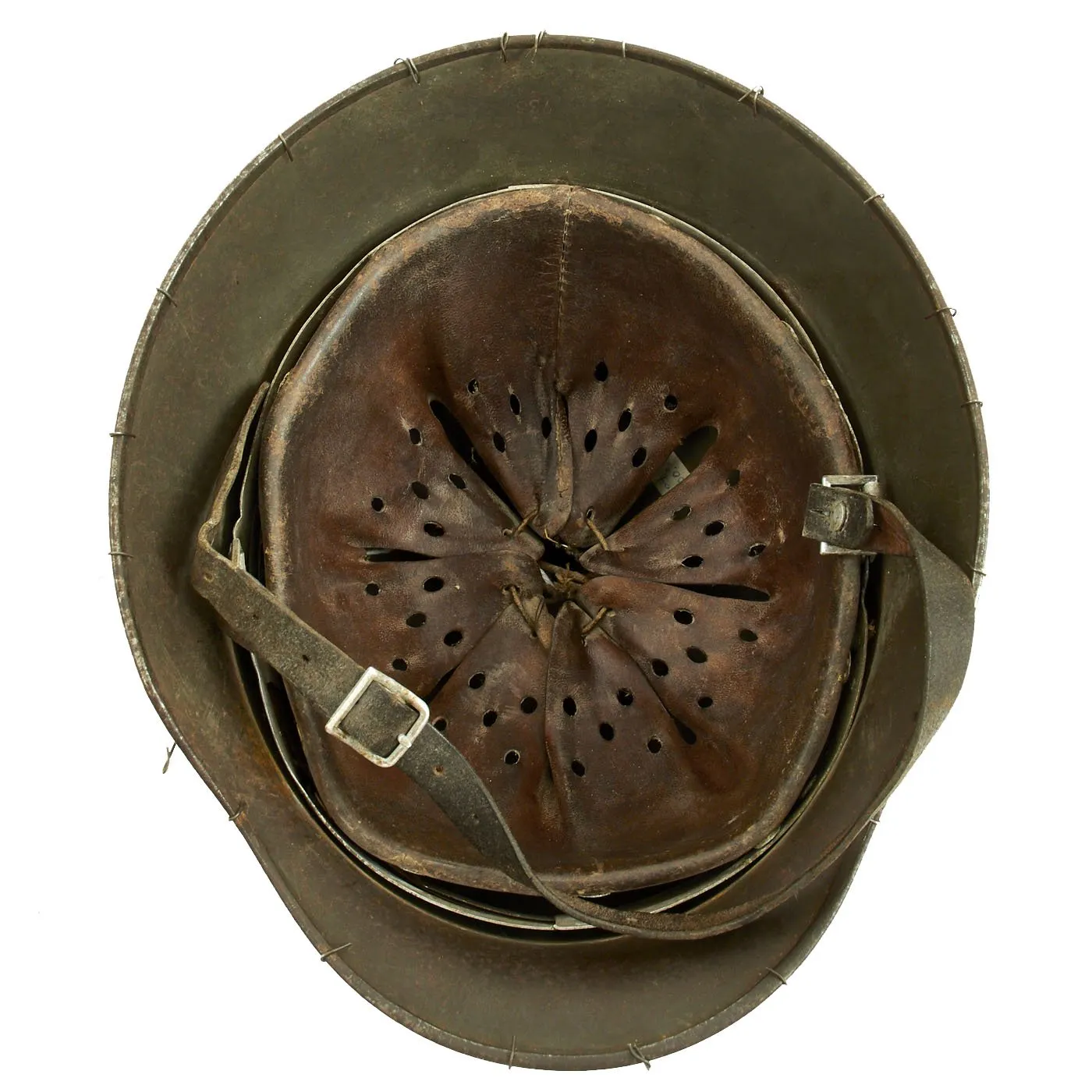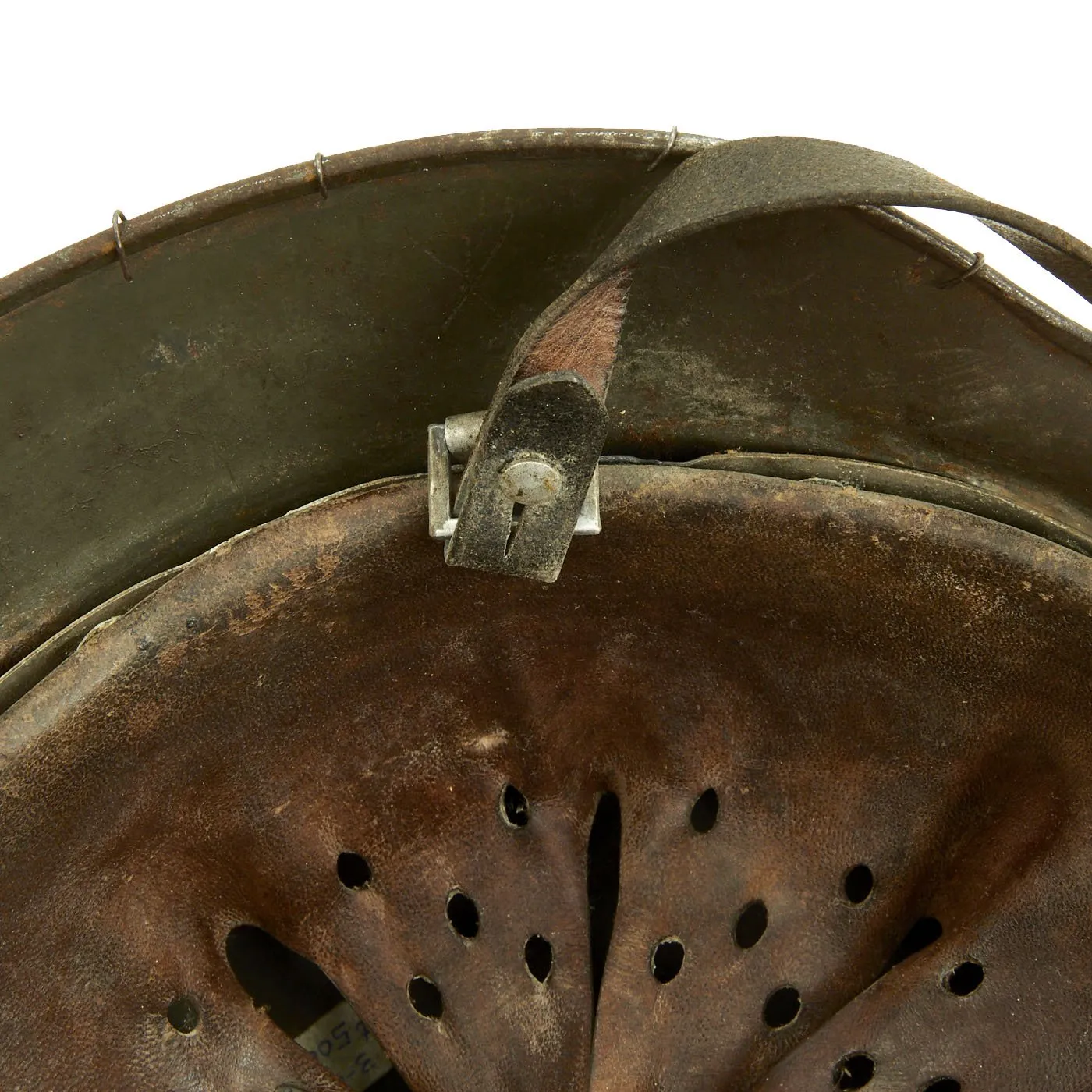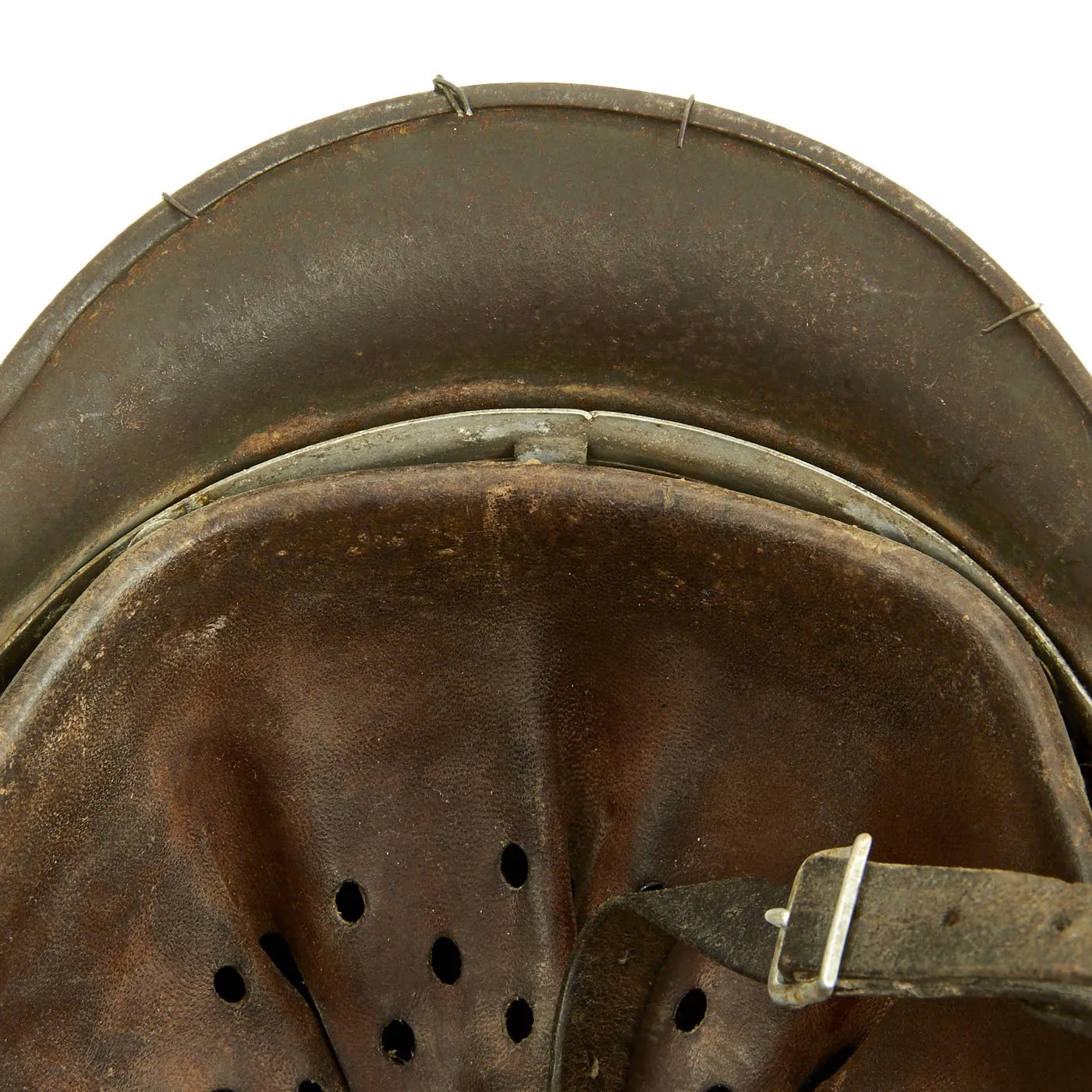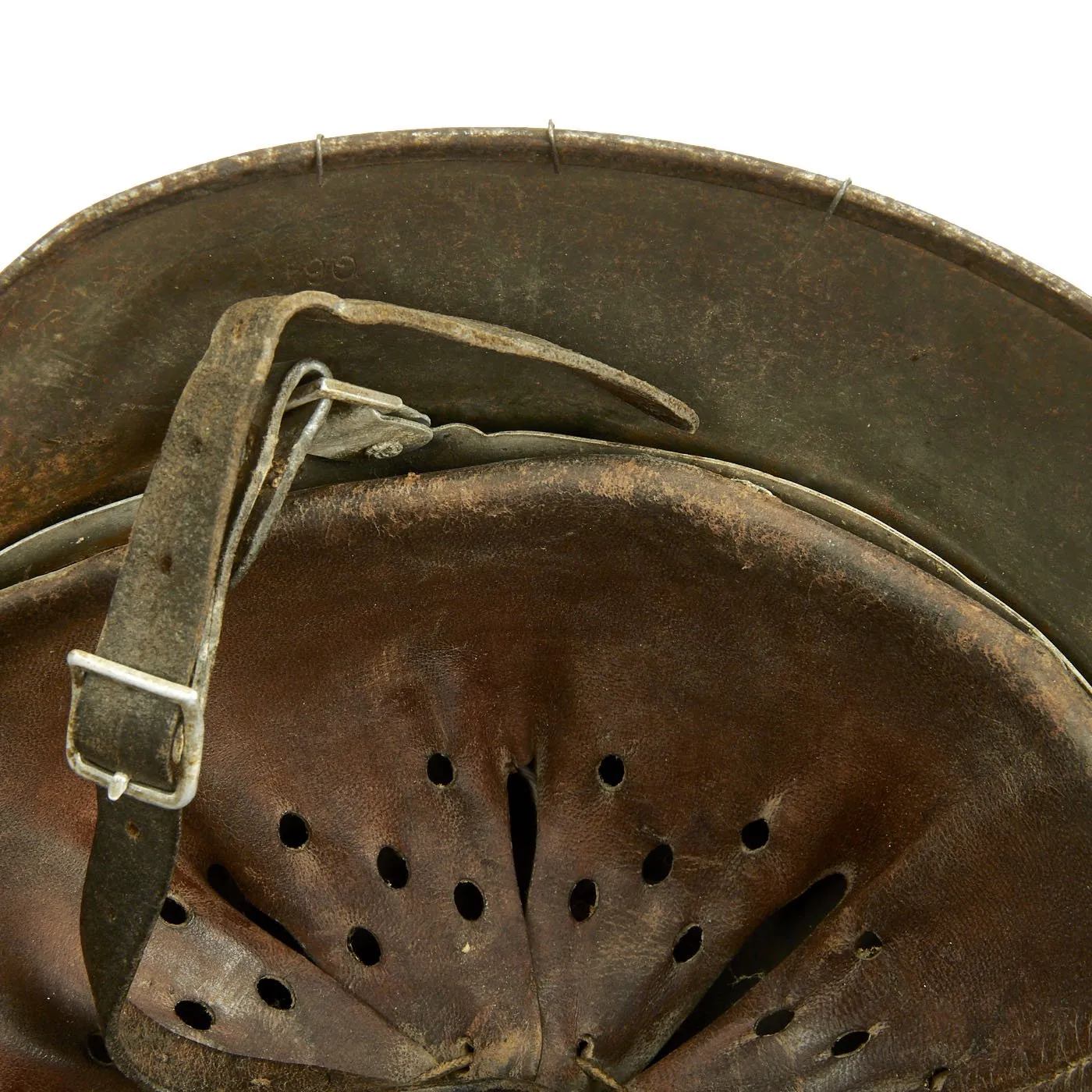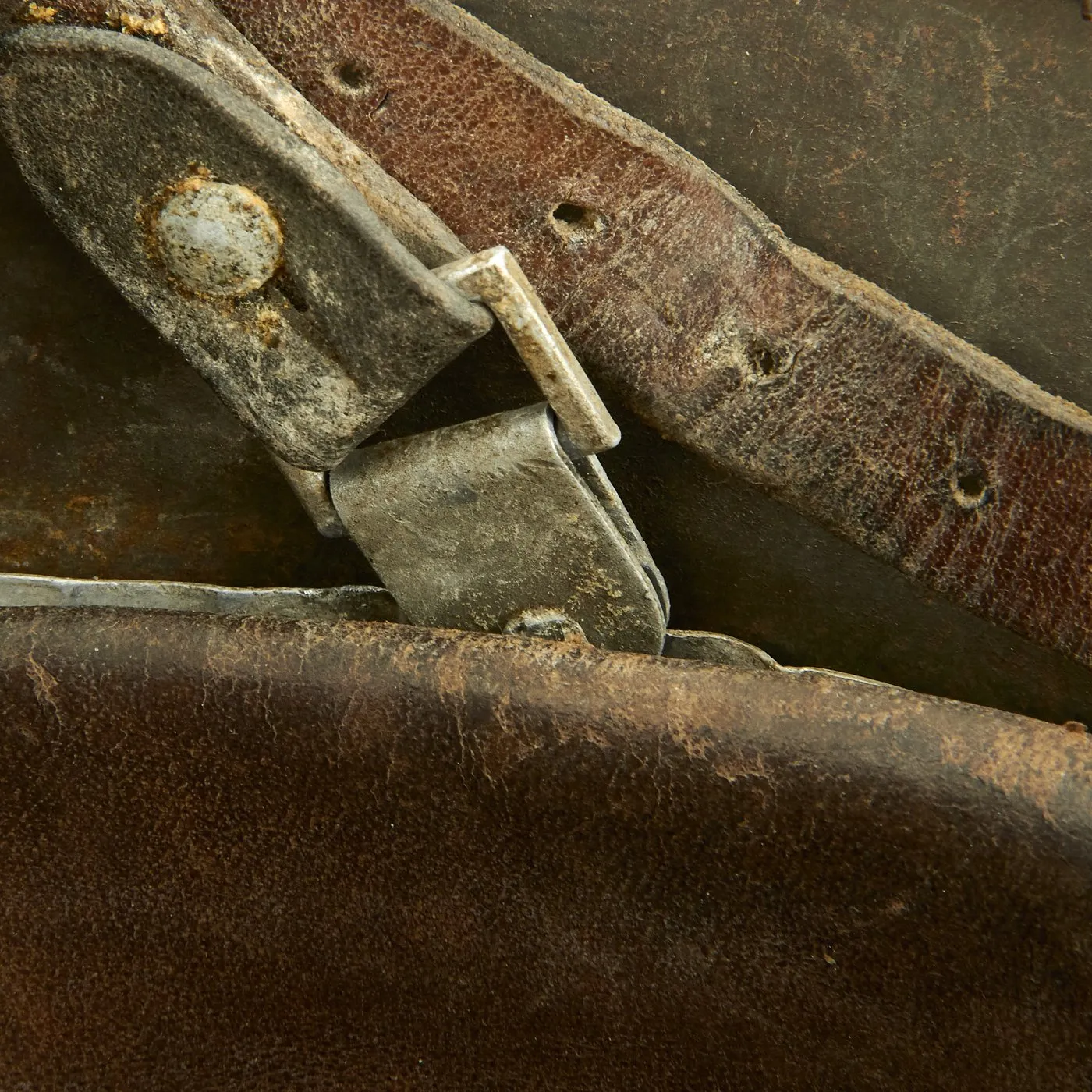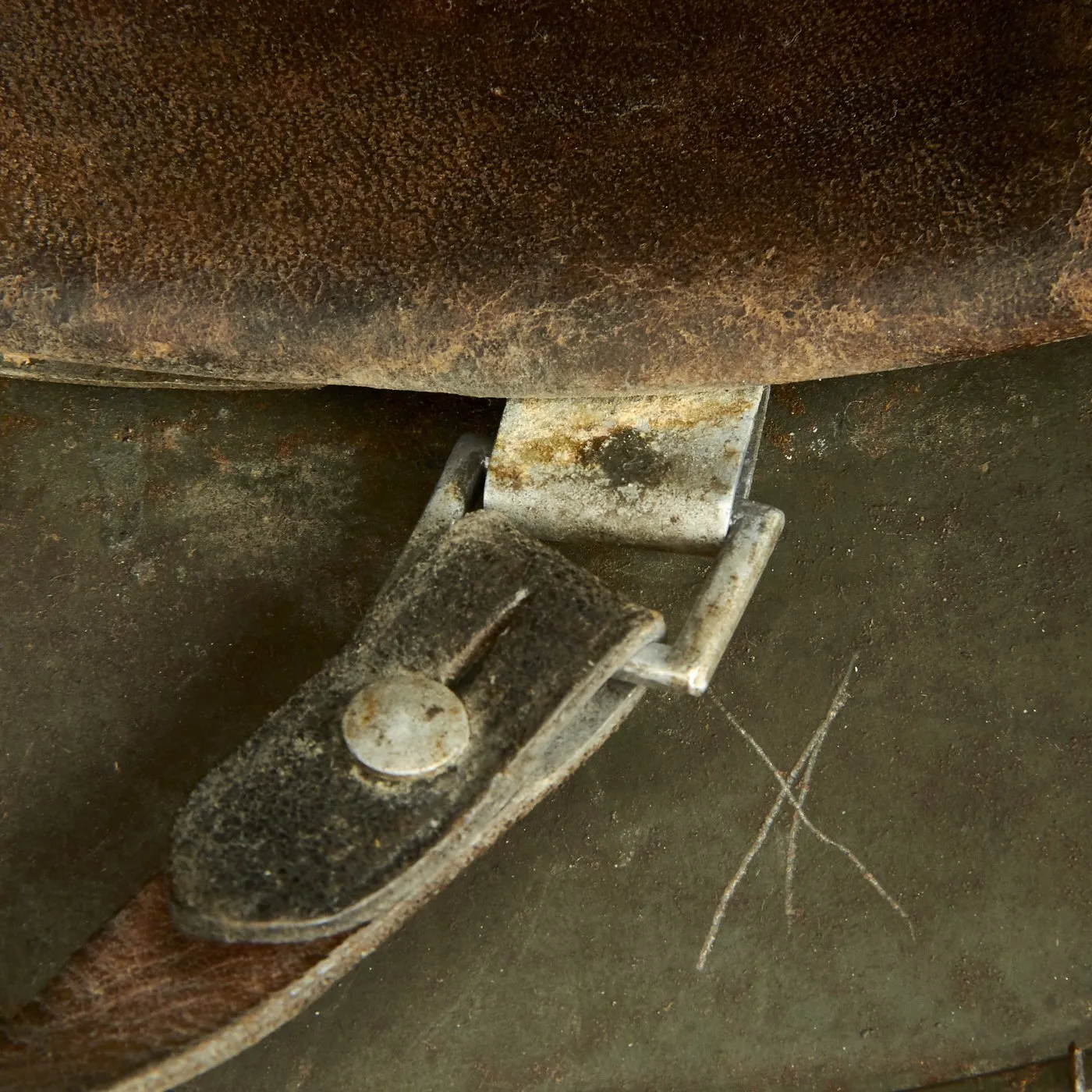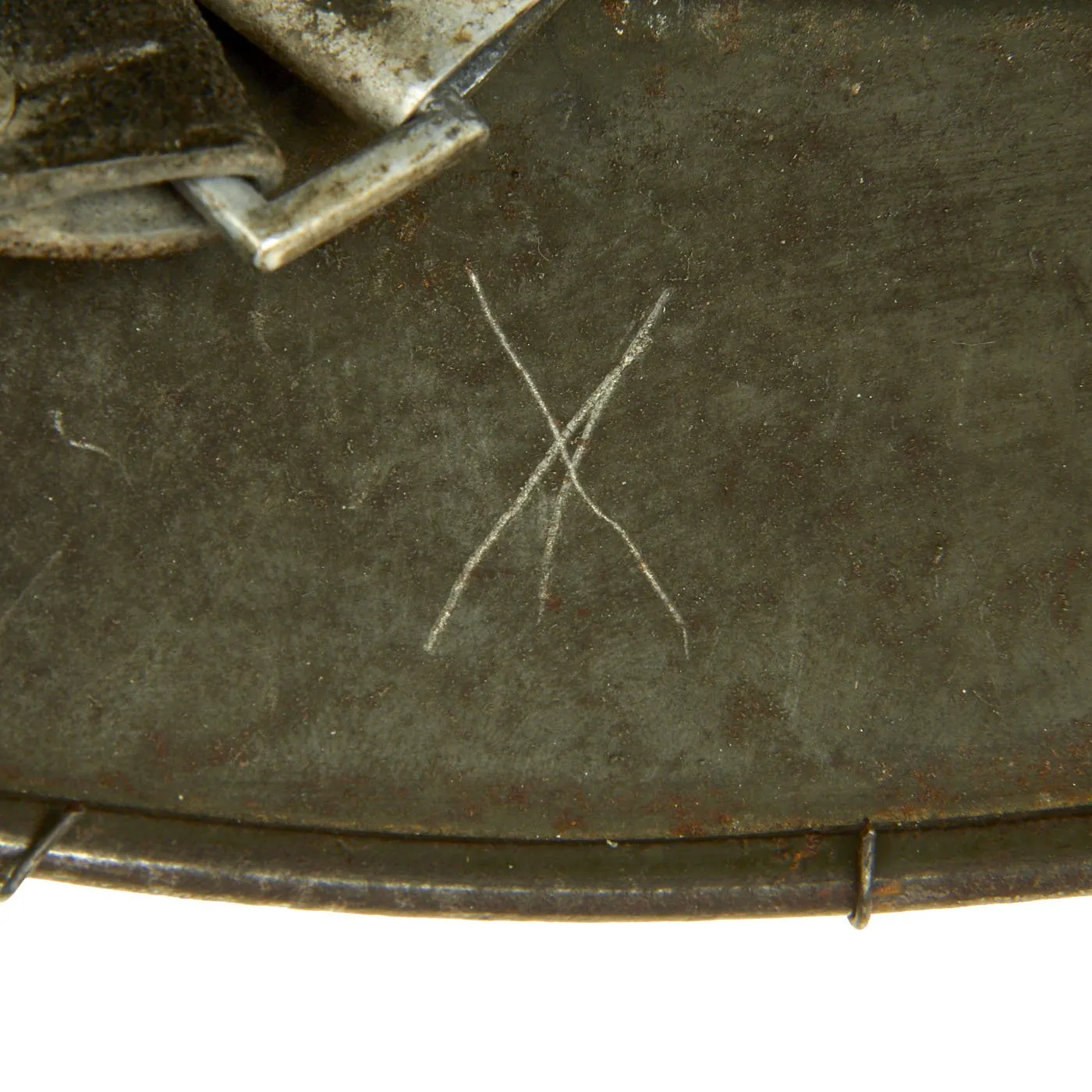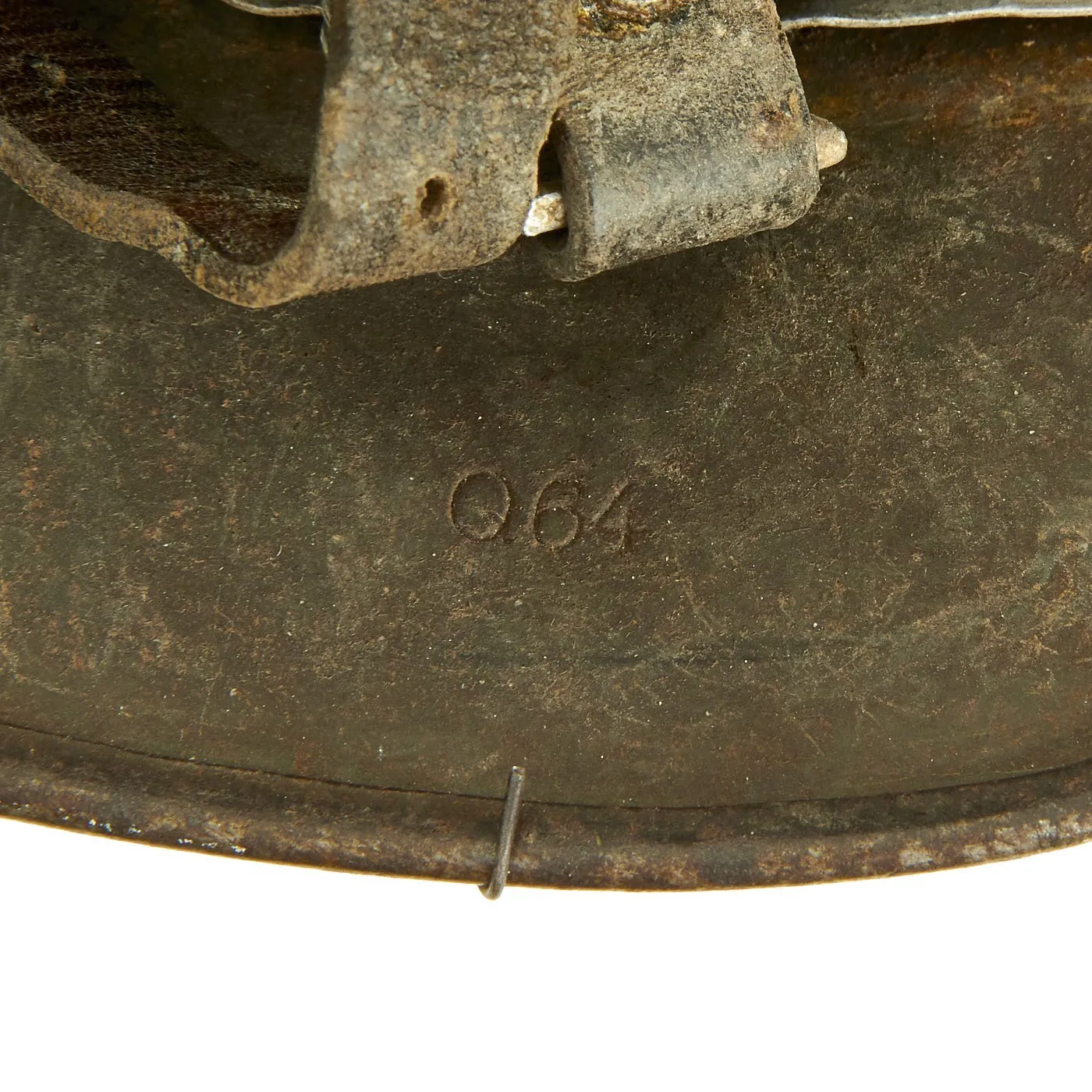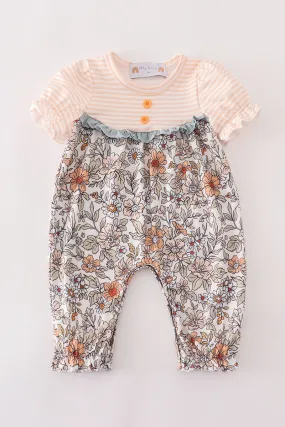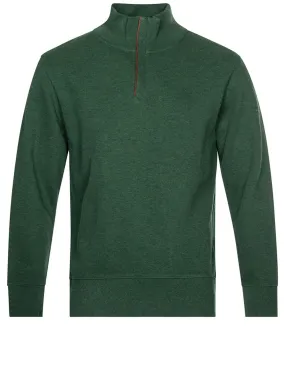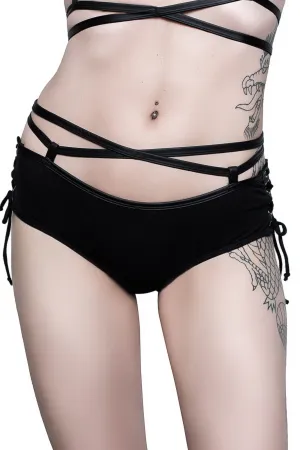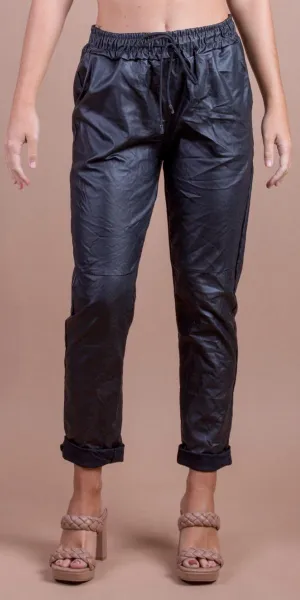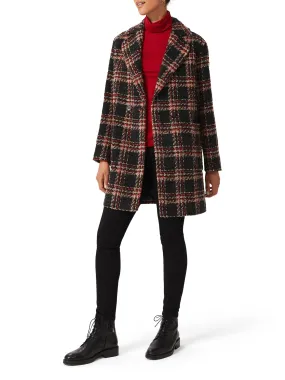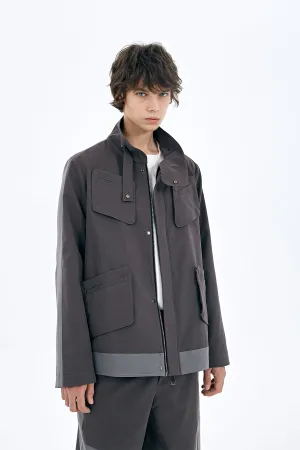Original Item: Only One Available. This is a very nice all original example of a German WWII M42 helmet, issued to the Heer (Army), with a lovely post war Chicken Wire Cover. The wire was used to easily attach foliage and other camouflage items from the area, and could easily be redecorated for a new season. When this helmet was brought back to the U.S., the wire was added long ago to make it a better display piece.
This stamped sheet steel construction helmet was originally the lighter green "Feldgrau" used during the pre-war period. It now shows chipping, scratches, and rust, typical of a helmet that was used in the field. Also, it originally had a decal, but this was removed either during or post war, though there is still a bit of the silver under coat present.
The reverse, interior, neck guard apron is serial number stamped 738 and the interior, left side, apron has the stamped manufacturer's code and size, Q64 indicating that it was manufactured by Quist in the German city of Esslingen. Size 64 is a nice smaller size that can accommodate liners from 56cm to 57cm or US 7 to 7 1/8. Size 64 shells are harder to find and are therefore more valuable to a collector.
All three liner retaining pins are intact, and retain most of their original green paint. The interior of the helmet still has the original M31 leather liner with all eight of it's fingers intact and an intact top tie. The liner does show use, with leather now quite dark in color, though it is still relatively soft and has no real damage or flaking The correct early aluminum liner band is marked 64 n.A. / 56, indicating that it is a size 56cm liner for a 64cm shell. The other side of the liner band has a clear manufacturer's mark and date:
SCHUBERTH-WERK
G.m.b.H.
BRAUNSCHWEIG
1937
The liner band does not have the later side reinforcements around the bale area, correct for this era of liner band.
Attached to the liner is a correct Early WWII chin strap, with aluminum hardware, which is complete and functional. There is some leather degradation due to age, but overall it is quite supple, with no major cracks or issues. It has a clear maker marking on the end of the longer portion: CARL ACKVA / BAD KREUZNACH / 1937. We see no reason to dout that this is the original chin strap for this helmet. The wear on the leather matches that of the liner.
Overall a very nice M35 Single Decal Heer Army helmet, complete with liner and intact chinstrap and fitted with some lovely post war chicken wire. This is an item that will only continue to appreciate in value over time.
The first "modern" steel helmets were introduced by the French army in early 1915 and were shortly followed by the British army later that year. With plans on the drawing board, experimental helmets in the field, ("Gaede" helmet), and some captured French and British helmets the German army began tests for their own steel helmet at the Kummersdorf Proving Grounds in November, and in the field in December 1915. An acceptable pattern was developed and approved and production began at Eisen-und Hüttenwerke, AG Thale/Harz, (Iron and Foundry Works), in the spring of 1916.
These first modern M16 helmets evolved into the M18 helmets by the end of WWI. The M16 and M18 helmets remained in usage through-out the Weimar Reichswehr, (National Defence Force, Circa 1919-1933), era and on into the early years of the Third Reich until the development of the smaller, lighter M35 style helmet in June 1935.
In 1934 tests began on an improved Stahlhelm, whose design was a development of World War I models. The Eisenhüttenwerke company of Thale carried out prototype design and testing, with Dr. Friedrich Schwerd once again taking a hand.
The new helmet was pressed from sheets of molybdenum steel in several stages. The size of the flared visor and skirt was reduced, and the large projecting lugs for the obsolete armor shield were eliminated. The ventilator holes were retained, but were set in smaller hollow rivets mounted to the helmet's shell. The edges of the shell were rolled over, creating a smooth edge along the helmet. Finally, a completely new leather suspension, or liner, was incorporated that greatly improved the helmet's safety, adjustability, and comfort for each wearer. These improvements made the new M1935 helmet lighter, more compact, and more comfortable to wear than the previous designs.
The Army's Supreme Command officially accepted the new helmet on June 25, 1935 and it was intended to replace all other helmets in service.
More than 1 million M1935 helmets were manufactured in the first two years after its introduction, and millions more were produced until 1940 when the basic design and production methods were changed to reduce production time. This mainly included having the vent hole being stamped directly into the shell, as opposed to being riveted on later.




